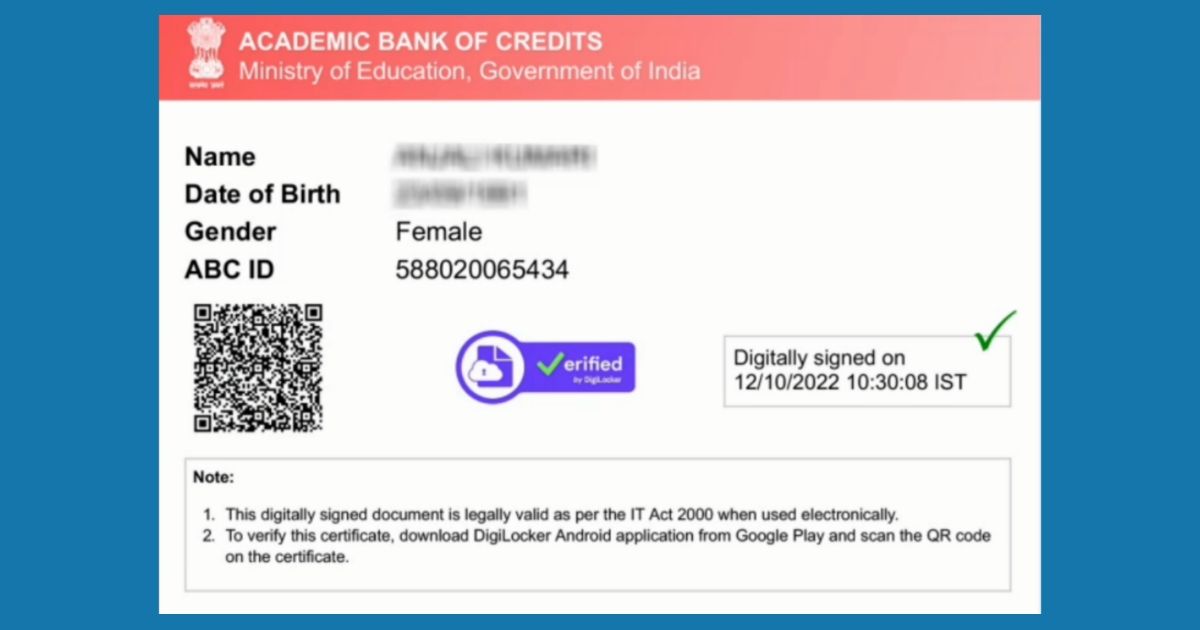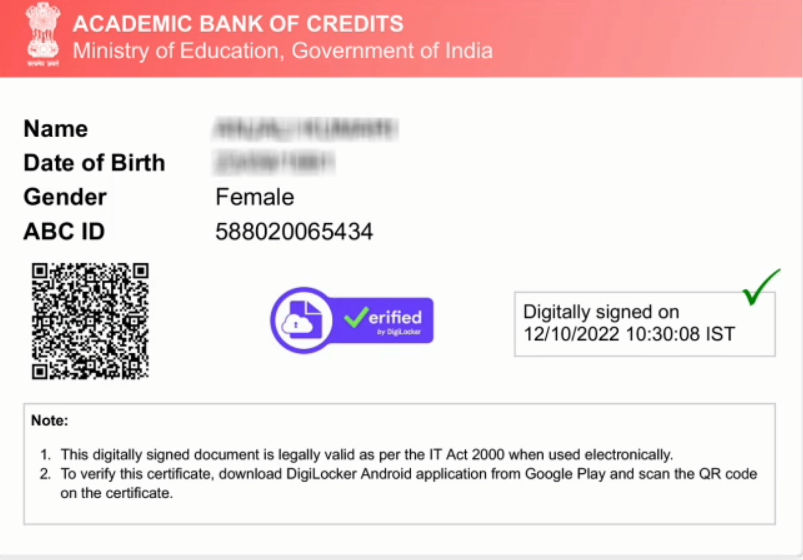
The Government of India has launched a new identity card for students called APAAR which stands for ‘Automated Permanent Academic Account Registry’. APAAR Card will have a 12-digit number, similar to the Aadhaar card, which will carry all the academic records of a student from school to college levels.
The APAAR Card will also contain information like scholarships received by the student, along with all the credits gathered by a student during any academic course. These credits are directly linked with the Academic Bank of Credits and can be transferred from one university to another.
What is APAAR ID For Students?
The concept of APAAR ID is similar to an Aadhaar Card, where a student is assigned a unique 12-digit number. This number will track the academic records of a student of all age groups, including school, junior college, degree college, and even post-graduation.
The APAAR ID will be directly linked with the Academic Bank of Credits (ABC), which is an official initiative by the Indian Government. When a student completes a semester or a course, the respective credits will be directly reflected in the ABC. These credits will be valid across all universities in India.

This will help a student to get transferred to any school, college, or university in India, without worrying about the recognition and validation of their previous education. Currently, over 2.18 crore students have been registered in the ABC from over 410 academic institutions in India.
The APAAR ID can be viewed directly on DigiLocker, along with all the academic records of the student. The APAAR ID will be visible as ABC ID, in the Education section of DigiLocker.
How To Register For APAAR ID?
Students looking to register for APAAR ID must have a valid Aadhaar Card. They must also have an account on DigiLocker, which will be used for eKYC. Note that registering for APAAR requires consent from the student’s parents, which will be asked at the time of registration.
Here’s a step-by-step guide to register for APAAR
- Go to abc.gov.in and click on My Account. Select the Student option.
- Log in to your DigiLocker account using your credentials.
- DigiLocker will now ask for your consent to share your Aadhaar Card details with ABC for KYC verification, select I agree.
- The portal will ask for your academic details such as school/university name, course name, etc. Fill in the details.
- Once done, save the details and exit the portal.

The APAAR ID can be viewed on DigiLocker, in the Education Section. It may be visible as ABC ID. The data in the APAAR ID is updated by the respective educational institutions from time to time. APAAR ID is directly linked to the student’s Aadhaar Card. Hence, one student can have only one APAAR ID, which will be valid for a lifetime.
The Union Education Ministry has issued a notification to all states, asking educational institutes to start using APAAR. However, it is important to note that registration for APAAR is voluntary, and not mandatory. Students can choose to opt out of APAAR ID.
As per the official notification, schools have been asked to contact the parents of students, to get consent for the registration of APAAR. Once the permission is granted, institutes can continue the registration of a student into the ABC registry. Students can also do the registration on their own, and then provide the details to their respective educational institute.
APAAR is a part of the Government’s ‘One Nation, One ID’ program for students. The idea is to have a single card which will carry all the academic records of the student, as compared to having multiple mark sheets and documents for completing a certain course.












